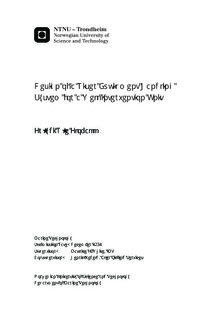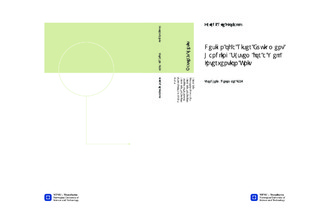| dc.description.abstract | A Well Intervention Unit performs subsea intervention on different water depths ranging from approximately 800-3000 meters. During a change of operations sites, between two neighbouring wells at different water depths, the length of the riser must be adjusted. This procedure is time consuming, and excessive cost-rates are the motivation for evaluating a new solution that may reduce the rigging time.
In this thesis, it is established a new handling sequence reducing the turnaround time by approximately 20-22 hours per trip. Estimated savings is thus 50-60 million NOK on a yearly basis. The suggested handling sequence is to elevate the Upper Riser Pack (URP) higher in the tower, leaving enough handling space underneath to retrieve riser elements. This eliminates the need of rigging down the surface stack, hence the turnaround time is reduced.
To be able to disconnect riser elements efficiently, while the URP is in the tower, a second yoke is introduced to the handling system. A yoke is a passive lifting appliance, and has to be connected to the main hoisting system, which already holds the Upper Riser Pack. The most convenient solution is therefore to connect the yoke to the Surface Flow Tree, the lowest component in the riser stack (UPR). This indicates that the entire Upper Riser Pack has to be elevated together with the new yoke system during riser retrieval. Suggested commercial solution is a hydraulic lifting yoke provided by National Oilwell Varco. This yoke consists of two weld-less BJ links and a BX 5 elevator.
Design specification together with relevant rules and regulations is used to define the load case. Normal operation, accidental heel, and an API-load is used when calculating and simulating the equipment. The API-load is the conservative estimate taken from the API 8C standard of the rated load, i.e. the design load, multiplied with a safety factor of 2.25. This is more conservative than DNV and will therefore be used as an additional test case.
The new riser handling system were drawn and simulated in SolidWorks. The yoke consist of the elevator assembly and two links. The elevator is a component designed to hold riser elements. The links are connection arms that give the necessary handling space between the Surface Flow Tree and the risers. The final component is the adapter; this component is designed to connect the yoke and the Surface Flow Tree. This component is tailor made for the operation sequence and the existing equipment. It is designed so that no additional modifications have to be made to the Upper Riser Pack.
Finally, a strength analysis of the new riser handling equipment is computed, and the results are presented. Some local yielding occurs, especially in the contact regions, but the overall impression is that the equipment satisfies the rules and safety requirements provided by both DNV and API. | |

